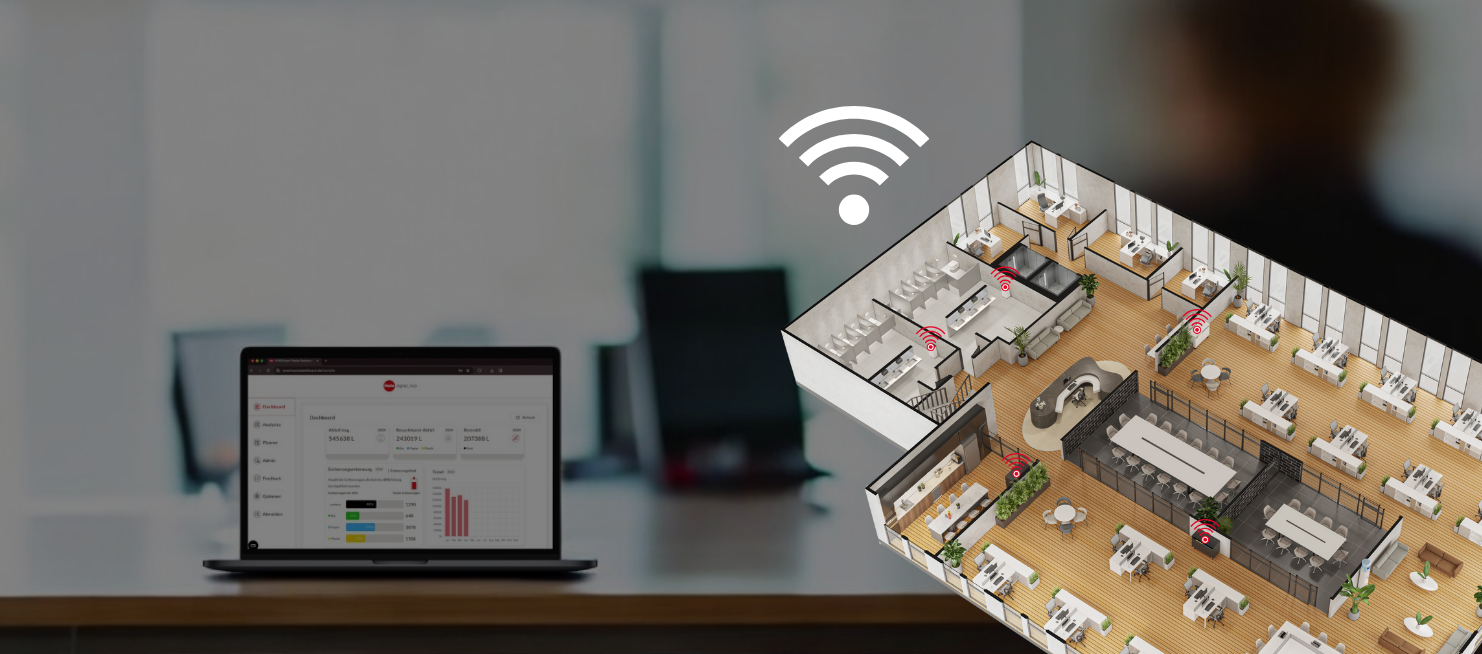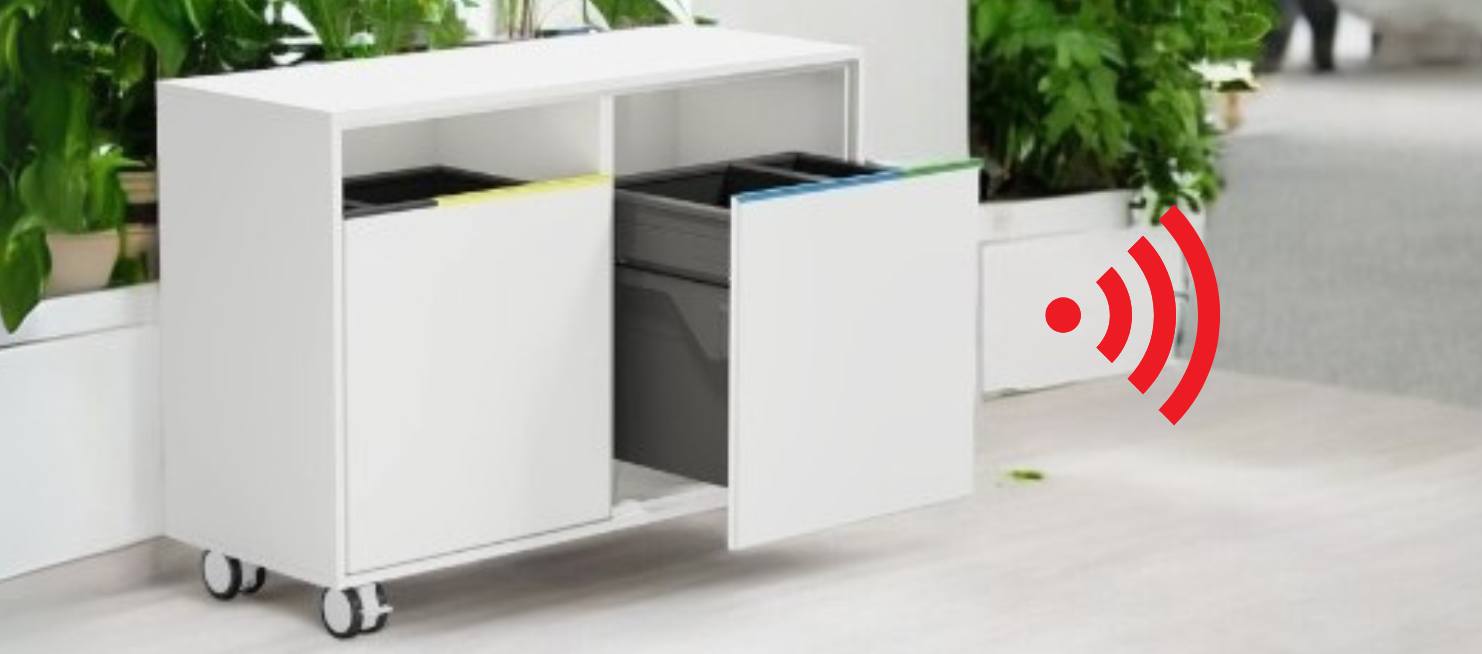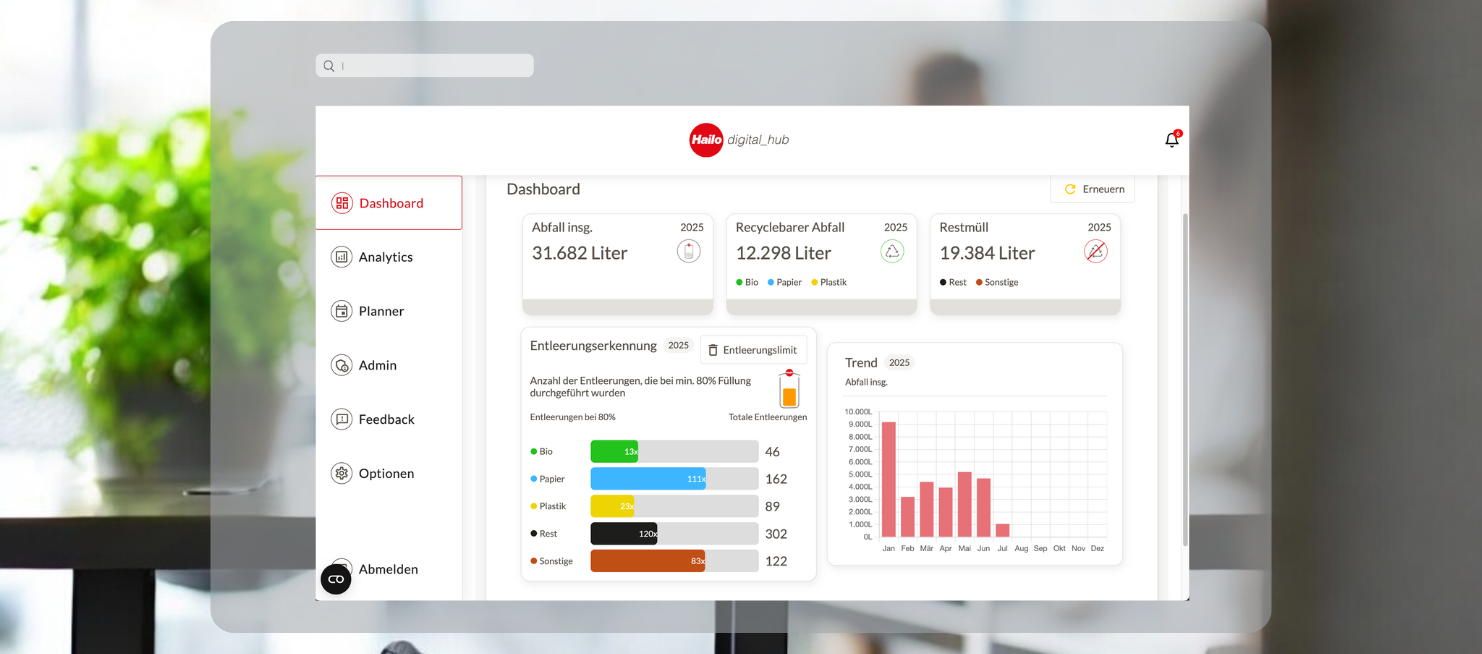Digitalizing facility cleaning: efficiency and sustainability through Smart Solutions

How can data and sensor technology revolutionize facility cleaning, particularly routine cleaning operations? Keeping large buildings such as office complexes or industrial halls cleaning in an efficient and sustainable way is a true logistical challenge. Fortunately, modern technologies make this task manageable. From demand-driven cleaning and optimized route planning to seamless documentation, this article shows how software, combined with intelligent sensors in waste bins, is transforming the daily reality for facility managers and cleaning service providers alike.
Demand-Based Cleaning Instead of Rigid Schedules
Traditionally, cleaning teams follow fixed schedules. But not every conference room, hallway or waste bin needs the same level of attention at the same frequency. This is where the principle of Cleaning on Demand comes into play: cleaning tasks are triggered by actual need rather than assumptions.
One key factor is waste emptying. Overflowing waste bins or paper baskets are often the first visual cues that an area requires cleaning h16b.com. This is precisely where Smart Waste data becomes invaluable. Hailo digital_hub’s Smart Waste Solutions measure bin fill levels in real time and predict the optimal moment for emptying. If the system detects that a bin is nearly empty, both the emptying and the associated cleaning task can be deferred. Conversely, when a bin is approaching capacity, the system alerts staff immediately before it becomes a hygiene issue.
The result is a dynamic, demand-based cleaning system: clean when necessary, resource-saving when possible.
In the Smart Waste Dashboard, facility managers gain a precise, real-time overview of which areas need cleaning and when. Instead of walking through every floor by default, staff routes can be planned in a way that’s smarter and more time-efficient. This allows tasks to be prioritized using real-time data: high-traffic areas such as meeting rooms or entrance halls are cleaned more frequently, while seldom-used spaces are serviced as needed. The outcome? Optimized walk paths for cleaning staff, less idle time and fewer unnecessary checks.
Thanks to real-time fill-level visibility, service providers can also react with greater flexibility. Urgent tasks, like a spill in the lobby, can be added to the schedule without disrupting existing plans, since all data is transparent and accessible from anywhere. In short, the cleaning process becomes "just-in-time." It’s hard to imagine a more efficient setup.
Software Solutions for Facility Managers and Service Providers
Modern cleaning software integrates sensor technology with cloud infrastructure. In practice, this means each waste bin equipped with a sensor continuously transmits fill-level data to a centralized application. Both internal facility teams and external cleaning providers can access this data via smartphone or tablet automatically gaining a clear overview of which bins require attention.
These software platforms significantly simplify coordination, especially in operations involving large teams or subcontractors. Duplicate efforts are avoided, and nothing is overlooked. Tasks and teams can be aligned more precisely, which increases both the speed and reliability of facility cleaning.
Another key advantage is automated documentation. All waste collections and cleanings are recorded in real time, creating a digital audit trail. This builds trust with clients and simplifies proof of performance during audits or quality inspections. The collected data can also be analyzed to uncover opportunities for process improvement, for example, identifying days with lower cleaning needs, or pinpointing areas that consistently generate more waste.
People Remain the Focus
Despite all the technology, cleaning teams remain at the heart of operations. Digital tools relieve staff from tedious, repetitive tasks, like routinely emptying dozens of almost-empty bins "just to be safe." Instead, teams can focus on tasks that matter. This boosts motivation, job satisfaction, and reduces stress, especially during times of staff shortages or illness.
Facility users and clients also benefit: cleaning quality improves because critical areas are always serviced in time, while unnecessary disruptions are avoided in less-used spaces. In short: efficiency and service levels rise in tandem.
Companies that adopt data-driven cleaning solutions are not only making smarter ecological and financial decisions, they are also creating better working conditions for their teams.
A New Era of Facility Cleaning
The digitalization of facility cleaning brings together sustainability, cost efficiency, and service quality. Smart sensors and software are enabling a true paradigm shift - from rigid, schedule-based operations to a flexible, needs-driven approach.










